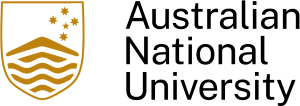Anaesthetics elective, Royal Melbourne Hospital, Melbourne

I completed my elective in the anaesthetics department at Royal Melbourne Hospital in Melbourne, Victoria. I chose anaesthetics because I like the balance between practical skills and applied knowledge, particularly of physiology and pharmacology.
During my elective I learned the important role that anaesthetists play.
Anaesthetics is analogous to takeoff and landing during flying, the riskiest parts of the flight.
It is the anaesthetist’s job to ensure that the patient is safely anaesthetised, remains so for the duration of the operation, and is then safely woken up.
The anaesthetist also plays an important role in patient care. Prior to surgery can be a very anxious time for patients. The operating theatre is a very unfamiliar environment and there are a lot of people moving around looking very busy. The patient can feel anonymous and overlooked, particularly in a major trauma centre like RMH. They do not have their family or friends there to support them. The anaesthetist is one of the last people to speak to the patient before the operation and they play an important role in reassuring about the unknowns of anaesthetics. Therefore, the short time that the anaesthetist spends with the patient is crucial.
The most important skills I learned during my elective was my ability to manage an airway. I think that these skills will be transferable to whichever area of medicine I choose to go into. I felt like there was a definite increase in complexity in the skills. First, I learned how to bag-mask ventilate, which should be sufficient to keep a patient alive until you can get more specialized help.
I also learned the important airway maneuvers, including jaw thrust, chin lift and head tilt. The better you can accomplish these maneuvers, the easier the airway is to manage.
I then progressed to improving my skills regarding airway adjuvants. The most basic is the Guedel airway, which is helpful in ventilating people with a lot of mass around their neck.
I then learned how to insert a laryngeal mask airway, which should be used for a general anaesthesia if you are confident that there is little to no risk of aspiration.
My most proud accomplishment was inserting an endotracheal tube by direct laryngoscopy. I also had the opportunity to watch many practical skills including central line insertions, spinals, epidurals and awake fiberoptic intubations.
I also learned about the theory behind anaesthesia. I learned that anaesthesia is a real balance between evidence-based medicine, experience and personal preference. If you ask ten anaesthetists how to do a certain procedure they will all give a slightly different answer.
I also discovered that total intravenous anaesthesia is the future of anaesthetics as its better for both the patient and the environment.
Overall, I had an enjoyable experience during my time in the anaesthetics department at Royal Melbourne Hospital and valued the opportunity to improve my skills at managing airways and interacting with patients at a crucial and daunting point in their healthcare journey.
